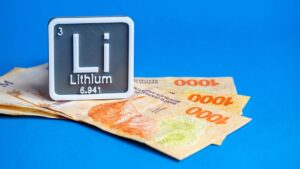Galan’s HMW is a compelling low-cost lithium project

Galan Lithium is speeding ahead with a compelling PEA for its Hombre Muerto West lithium project. Pic: Getty Images
Special Report: Galan has pencilled in some compelling numbers for its Hombre Muerto West lithium project that places it in the lowest quartile for production costs.
The preliminary economic assessment, which is equivalent to a JORC scoping study, estimates that the Argentinean project will have cash costs of about $US3,518 ($4,632.04) per tonne of lithium carbonate, one of the lowest in the industry.
Pre-tax net present value and internal rate of return – both measures of a project’s profitability – are estimated by Galan Lithium (ASX:GLN) at $US1bn and 22.8 per cent respectively.
Managing director Juan Pablo Vargas de la Vega says the company is delighted by the compelling and more than competitive results from the PEA.
“We have proven high grade, low impurities, a considerable resource size and now being potentially among the lowest cost of future producers in the lithium industry, especially with a low carbon footprint,” he noted.
More importantly, Vargas de la Vega explained that Galan now has a commercial base to move forward with a clean, proven, low tech and low energy solution with no joint venture or non-statutory royalties involved.
“We have now a strong base to review and reduce Opex and Capex including the substantial US$101m of contingency (30%),” he added.
“We have learnt enormously about HMW on this journey and will continue to apply our findings in optimising our next steps at the Pre-Feasibility and Feasibility studies.”
Hombre Muerto West PEA
Under the PEA, Hombre Muerto West is envisioned as a project capable of producing 20,000 tonnes per annum for more than 40 years.
Capital costs are estimated at $US439m though this includes a 30 per cent contingency that could be reduced through further optimisation.
The project is also expected to generate average life-of-mine annual earnings before interest, taxes, depreciation and amortisation (EBITDA) of $US174m.
Roskill’s average long-term lithium carbonate price (2020-2040) of $US11,687/t was used as the basis for the economic assessment.
Additionally, the PEA uses just 60 per cent of the current mineral resource estimate, which provides the flexibility to increase production rates.
The completion of the Del Condor acquisition also provides potential to optimise the project’s layout in the next study phase, which could reduce Capex and Opex estimates further.
This article was developed in collaboration with Galan Lithium, a Stockhead advertiser at the time of publishing.
This article does not constitute financial product advice. You should consider obtaining independent advice before making any financial decisions.
Related Topics

UNLOCK INSIGHTS
Discover the untold stories of emerging ASX stocks.
Daily news and expert analysis, it's free to subscribe.
By proceeding, you confirm you understand that we handle personal information in accordance with our Privacy Policy.








